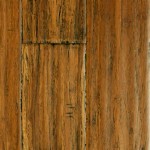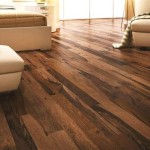Linoleum Flooring Roll Sizes: A Comprehensive Guide
Linoleum flooring, a resilient and sustainable option, has experienced a resurgence in popularity due to its durability, environmentally friendly composition, and diverse design possibilities. When considering linoleum for a flooring project, understanding the available roll sizes is crucial for accurate planning and efficient installation. This article provides a comprehensive overview of linoleum flooring roll sizes, factors influencing size selection, and best practices for handling and installation.
Linoleum is manufactured using natural materials, including linseed oil, rosin, wood flour, cork dust, limestone, and pigments. These components are combined and pressed onto a jute backing, resulting in a flexible and durable flooring material. Unlike vinyl flooring, which is a synthetic product, linoleum's natural composition contributes to its biodegradable properties and lower volatile organic compound (VOC) emissions, making it a healthier choice for indoor environments.
Linoleum flooring is typically available in two primary formats: sheets (rolls) and tiles. While tiles offer ease of handling and modular design options, rolls provide a seamless surface that can be particularly beneficial in areas prone to moisture or requiring a clean, hygienic environment. The focus of this article is on linoleum rolls, also known as sheet linoleum.
Standard Widths of Linoleum Rolls
Linoleum flooring rolls are manufactured in specific standard widths, which are important to consider when planning a flooring project. These standard widths influence the amount of material required and the potential for waste. The most common widths for linoleum rolls are as follows:
2 Meters (Approximately 6.56 Feet): This is a widely available width, often considered the standard for residential and commercial installations. The 2-meter width offers a balance between manageability and minimizing seams in smaller to medium-sized rooms.
4 Meters (Approximately 13.12 Feet): This wider width is commonly used for larger commercial spaces, such as retail stores, healthcare facilities, and educational institutions. The 4-meter width reduces the number of seams required, resulting in a more visually appealing and hygienic flooring surface. Using wider rolls also reduces the amount of labor required to seam multiple pieces together, saving time and money.
It is important to note that the availability of specific widths may vary depending on the manufacturer and the region. Consulting with flooring suppliers and manufacturers is essential to confirm the available options and ensure that the chosen width aligns with the project requirements.
Roll Lengths and Total Area
In addition to width, the length of the linoleum roll is a critical factor in determining the total area of flooring available. Linoleum rolls are typically sold by the running meter or foot. The standard roll length can vary between manufacturers, but common lengths range from 20 to 30 meters (approximately 65 to 98 feet).
To calculate the total area covered by a linoleum roll, multiply the width by the length. For example, a roll that is 2 meters wide and 25 meters long will cover an area of 50 square meters (2 meters x 25 meters = 50 square meters). Similarly, a roll that is 6.56 feet wide and 82 feet long will cover an area of 538 square feet (6.56 feet x 82 feet = 538 square feet). When estimating the amount of linoleum required for a project, it's crucial to account for waste due to cuts, patterns, and potential imperfections.
Flooring manufacturers often provide calculators or tables to assist in determining the amount of material needed based on room dimensions. These tools can help minimize waste and ensure that enough material is ordered to complete the project.
When purchasing linoleum rolls, it is advisable to check the manufacturer's specifications for the roll length and area. Some manufacturers may offer custom roll lengths to accommodate specific project requirements. Custom orders may require longer lead times and may be subject to minimum quantity requirements.
Factors Influencing Roll Size Selection
Several factors influence the selection of the appropriate linoleum roll size for a flooring project. These factors include the size and layout of the room, the complexity of the design, and the desired aesthetic appearance. Additionally, factors related to installation, waste management, and budget also play a significant role.
Room Size and Layout: The dimensions and shape of the room are primary determinants of the optimal roll size. For small to medium-sized rooms, a 2-meter wide roll may be sufficient to cover the area with minimal seaming. However, for larger or irregularly shaped rooms, a wider 4-meter roll may be necessary to reduce the number of seams and create a more seamless appearance.
Design Complexity: If the design involves intricate patterns or borders, selecting a roll size that minimizes waste is crucial. Complex patterns may require more careful planning and cutting, which can increase the amount of material needed. Using software or templates to pre-plan the layout can help optimize material usage and reduce waste.
Seam Placement: The placement of seams is an important consideration in linoleum flooring installations. Seams should be strategically located in areas that are less visible or subject to heavy traffic. While modern seaming techniques can create virtually invisible seams, minimizing the number of seams altogether is generally preferred to enhance the visual appeal and reduce the risk of seam failure over time. Wider rolls can help achieve this goal.
Waste Management: Linoleum flooring installations inevitably generate some waste. Choosing a roll size that aligns with the room dimensions can help minimize waste and reduce disposal costs. Proper planning and accurate measurements can also contribute to more efficient use of materials. Consider using leftover pieces for smaller areas, such as closets or entryways, to maximize material utilization.
Budget Considerations: While wider rolls may reduce the number of seams and improve the overall aesthetic, they may also be more expensive than narrower rolls. Balancing the cost of materials with the labor required for installation is essential. Consider obtaining quotes from multiple suppliers and contractors to compare prices and ensure that the chosen roll size aligns with the project budget.
Handling and Installation Considerations
Proper handling and installation techniques are essential to ensure the longevity and performance of linoleum flooring. Linoleum rolls can be heavy and require careful handling to avoid damage. Hiring experienced installers who are familiar with linoleum installation techniques is highly recommended.
Acclimation: Before installation, linoleum rolls should be acclimated to the room temperature for at least 24 to 48 hours. This allows the material to expand or contract and adjust to the ambient conditions, reducing the risk of buckling or warping after installation.
Subfloor Preparation: The subfloor must be clean, dry, and level before linoleum is installed. Any imperfections in the subfloor can telegraph through the linoleum, resulting in an uneven surface. Repairing cracks, filling holes, and sanding down any bumps are essential steps in preparing the subfloor.
Adhesive Selection: Using the appropriate adhesive is crucial for a successful linoleum installation. Consult with the linoleum manufacturer to determine the recommended adhesive for the specific product and application. Applying the adhesive evenly and according to the manufacturer's instructions is essential to ensure proper bonding.
Seaming Techniques: When seaming linoleum rolls, using a specialized seaming tool and following the manufacturer's recommendations is critical. Proper seaming creates a watertight bond and prevents dirt and moisture from penetrating the seams. In some cases, heat welding may be used to create a stronger and more durable seam.
Cutting and Trimming: Accurate cutting and trimming are essential for a professional-looking installation. Using a sharp utility knife and a straight edge to make precise cuts is crucial. Leaving a small gap around the perimeter of the room allows for expansion and contraction.
Rolling and Smoothing: After the linoleum is installed, rolling the surface with a heavy roller helps to ensure proper adhesion and remove any air pockets. Smoothing out any wrinkles or imperfections with a hand roller can also improve the final appearance.
By carefully considering these handling and installation factors, flooring professionals and homeowners can ensure a successful and long-lasting linoleum flooring installation.

Dark Forrest Oak Vinyl Lino Roll Flooring 2m 4m Width Kitchen Bath

Farmhouse Wood Vinyl Lino Roll Flooring 2m 4m Width Kitchen Bathroom

Low Anti Slip Wood Look Pattern 0 45mm Pvc Vinyl Flooring Roll With Diffe Backings China Made In Com

Linoleum Flooring Residential Commercial Tile Planks Sheet Panel

Pvc Carpet Vinyl Flooring 1 83m 2m Width Linoleum Roll Floor Protection Rolls China Made In Com

Wood Effect Brown Commercial Heavy Duty Slip Resistant Vinyl Flooring Roll With 2 0mm Thickness Waterproof Linoleum

Vinyl Flooring 60 Off Roll Sheet Free Samples

Plastic Floor Thickness 0 32mm 7mm Linoleum Flooring Rolls Pvc Vinyl Roll Carpet Covering Indoor Use China Made In Com

Style Selections Providence Oak 10 Mil X 12 Ft W Waterproof Cut To Length Vinyl Sheet Flooring In The Department At Com

Trafficmaster Grayson Wood 5 Mil 12 Ft W X Cut To Length Waterproof Vinyl Sheet Flooring U5250632k792g14 The Home Depot
Related Posts








